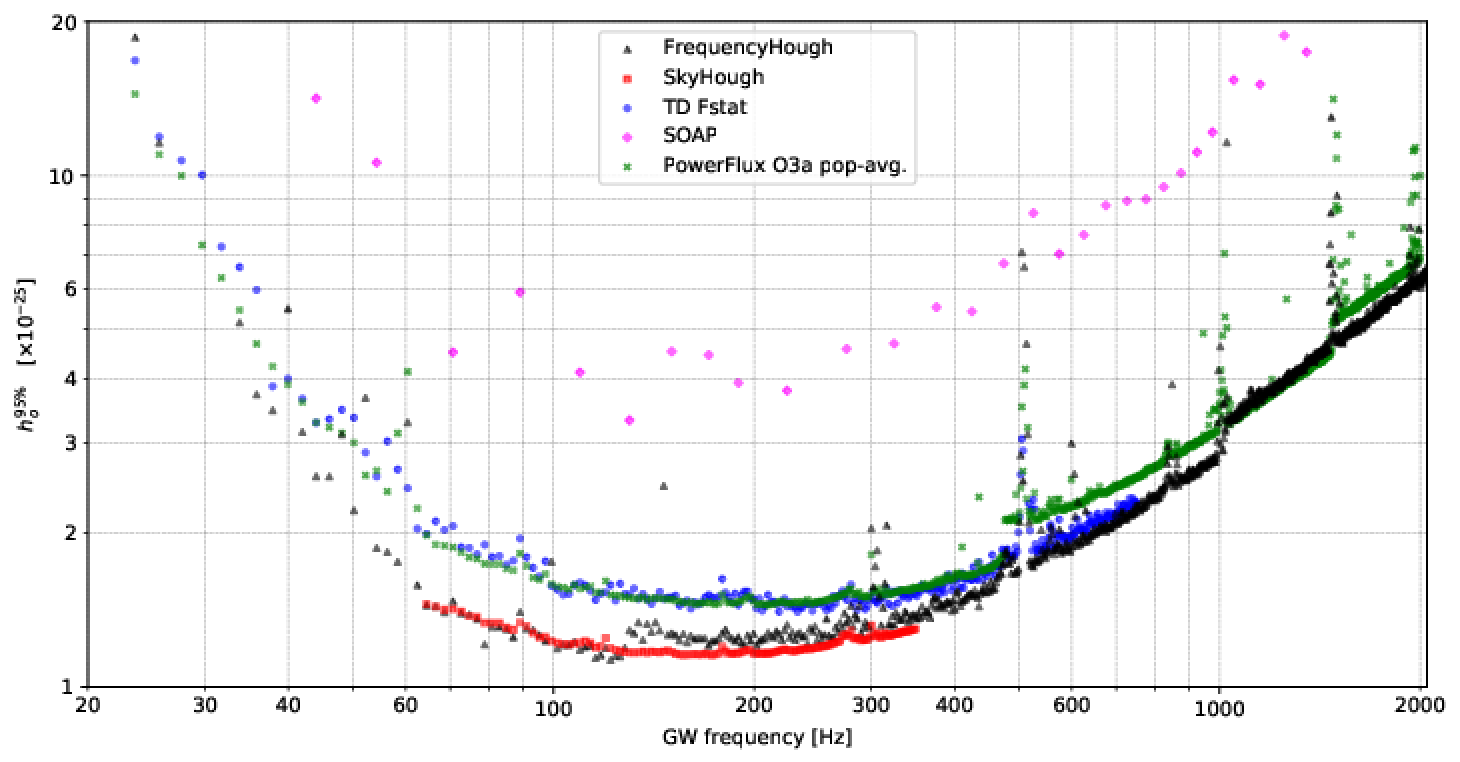The search for grawitational waves from isolated neutron stars

The LIGO-Virgo-KAGRA collaboration has published the results of the search for continuous gravitational waves in the data from the entire O3 observational campaign. It is expected that such waves can be emitted by e.g. axially asymmetric neutron stars, but their amplitude is much smaller than the regularly observed, short-term signals emitted during black hole mergers. For this reason, they have not been observed so far. In this publication, we present the results of four independent methods obtained by various research groups that carried out the so-called blind searches in a wide range of parameters: all sky, frequency range from 10 to 2048 Hz and rate of frequency change from $-10^{- 8}$ to $10^{- 9}$ Hz / s. The obtained limitation on the relative wave amplitude, $1.1\cdot 10^{- 25}$, at the frequency of 200 Hz translates into the ellipticity of the neutron star $3\cdot 10^{- 7}$ observed from a distance of 100 parsecs, and this is the best result obtained so far. An interesting fact is that we provide additional restrictions on the number of binary systems of primary black holes. Such hypothetical, planetary and asteroidal mass objects should emit gravitational waves continuously like a non-symmetrical neutron stars, and can therefore be detected by the same methods.
One of the methods used in the work, TD-Fstat (F-statistics in the time domain) is the original method of the Polgraw group and our group coordinated the writing of the entire publication.